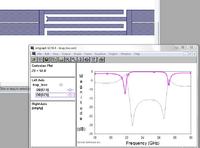MobiNaz
Full Member level 3
Hi all,
Can anyone please advice what is the best way to substitute a capacitor by Transmission line at 40 GHz?
A gap in TL, coupled lines?
Thanks in advance
Can anyone please advice what is the best way to substitute a capacitor by Transmission line at 40 GHz?
A gap in TL, coupled lines?
Thanks in advance
